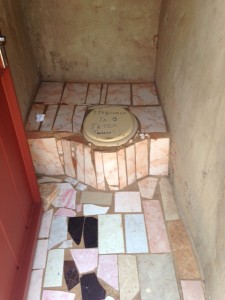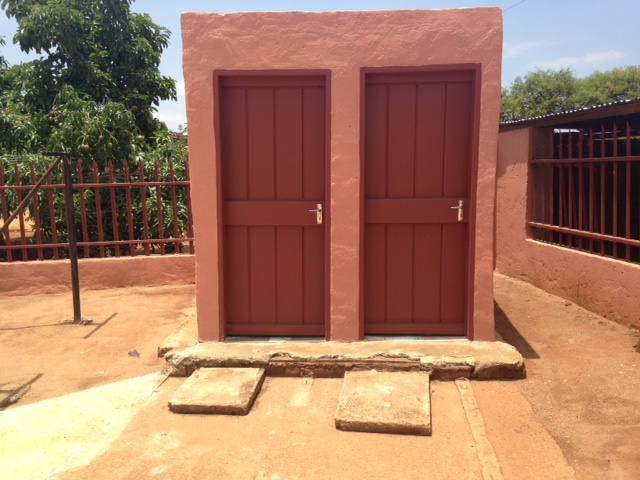Matlhomola Pilane was born and bred in Thotwaneng, a village 60 km outside of Rustenburg. Being the only child, and the eldest boy amongst his cousins, he learnt how to build a long drop toilet as a teenager, and still builds them for family and people in the community today. He told PONTSHO PILANE about it.
Growing up disadvantaged and in the villages, like I did, means that you will never have a toilet that flushes. Well, if you are lucky enough, you can save up money to build a house that has one, which my family and I were fortunate enough to do. But unlike the people in the townships who have outside flushing toilets, we have to dig our own.
In our community, pit latrines – long drops – are the norm and not the exception. Very few people use flushing toilets. Most people here cannot afford to build flushing toilets because it means a higher water bill. Of the ten houses around us, only three have flushing toilets.
The first thing you must do is decide if you are building one or a set of two. I prefer the two-door ones so that people don’t have to wait for each other. Then you must check if you have all the equipment and materials you will need: shovels, zinc metal sheets, cement, water, paint buckets, ladder and picks to name a few.
I dig a very deep hole, almost as deep as a grave. I use the pick to break the ground. The depth is your choice – if you are brave enough, you can dig even deeper. The deeper the hole, the better because it means the toilet will not fill up quickly. As I use the pick someone else uses the shovel to remove the soil.
Digging the hole is the most exhausting part – it can take two days, but if you are fit and energised, even a day is enough. I save the soil we dig up for later on when we will mix it with the cement and water to make concrete for the bricklaying.
I then build a wall of bricks around the bottom of the hole. Most people don’t do it this way but experience has taught me that as the soil gets wets from the faeces, it falls into the hole and makes it fills up quicker. There is also a chemical you can buy that eats away at the faeces to ensure it doesn’t fill up.

Most of the hard work is over at this point. To make the seat place I use an old 20 litre paint bucket and cut the bottom part out to make a cylinder. After that all I do is build around the seat with more concrete and bricks.
Then I extend the walls and make ventilation holes. Once I have reached the suitable height of the wall, I put logs across the top of the walls and then nail the zinc sheets onto the log, just like I would if I was building a house.
The last steps are to put in doors and paint the toilet. The toilet must be user friendly and presentable. I added pieces of old ceramic tiles, sort of a mosaic, to make the toilet beautiful and to make it easier to clean. Our village is very dusty, so it is easier if all we do is mop.
I am not sure how many long drops I have built in my life, but I have built them for my family even when we had inside toilets. Some families may need to build three or four long drops in their lifetime, because sometimes they are not built correctly and they fill up rapidly. But in my yard, I have built three different toilets in the past 30 years. With the right building strategy and chemicals, the toilet will last a long time.
To me the long drop toilet is important and necessary because when we have water shortages, which are frequent, we don’t struggle. It is also cost effective because when we have a function we don’t have to rent mobile toilets.
Although there are perks to long drops, they are also dangerous. In the early 90s, one of the children in the neighbourhood fell inside the toilet. We had to use ropes to get her out. Small children are banned from using the toilet, and they know it. If they need to go, we tell them to squat behind the toilet and an older person scoops the faeces into the toilet. This avoids a lot dangerous situations. Sometimes people are untidy and their toilets will smell. I hate that, because it can easily be solved with using Jeyes Fluid disinfectant. If it smells, it can’t be healthy.
– As told to Pontsho Pilane

![Thotwaneng long drop [slider]](https://www.thedailyvox.co.za/wp-content/uploads/2014/11/Thotwaneng-long-drop-slider.jpg)








